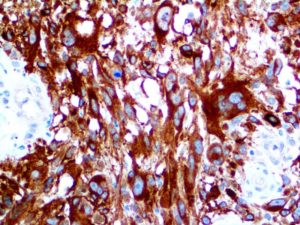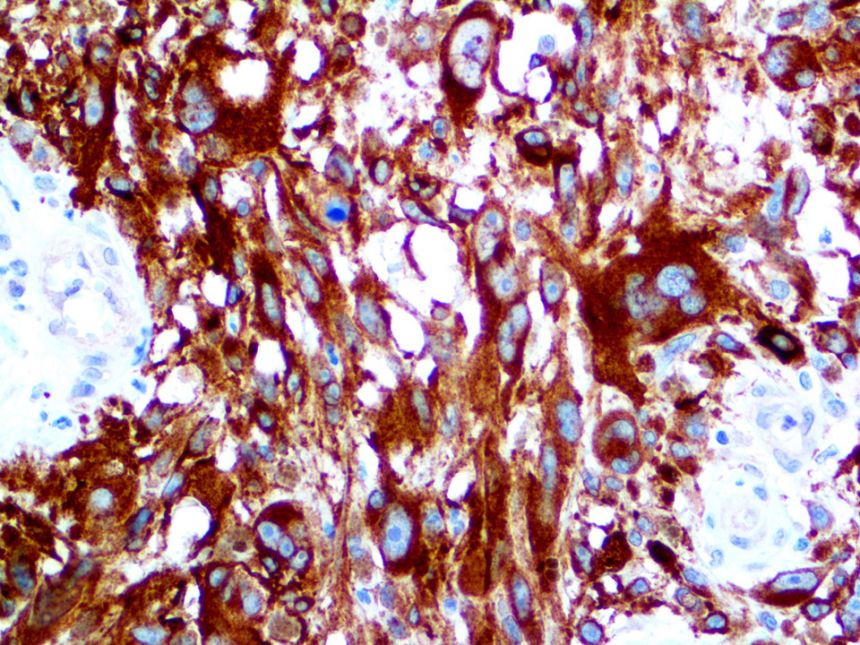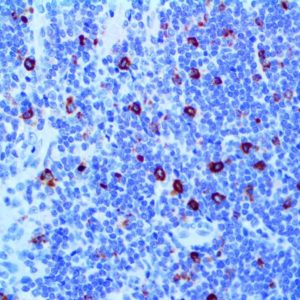
IHC of Tyrosinase on an FFPE Malignant Melanoma Tissue
| Intended Use | For In Vitro Diagnostic Use | |||||||||||||||||||||||||||||||||||
| Summary and Explanation | Tyrosinase is an enzyme that catalyzes the oxidation of phenols (such as tyrosine) and is widespread in plants and animals. Tyrosinase is a copper-containing enzyme present in plant and animal tissues that catalyzes the production of melanin and other pigments from tyrosine by oxidation. The gene for Tyrosinase is regulated by the Microphthalmia-associated transcription factor. A mutation in the tyrosinase gene leads to impaired tyrosinase production resulting in Type I Oculocutaneous Albinism, a hereditary disease that affects 1 in 17,000 people in the U.S.Anti-Tyrosinase has been found to be quite specific for melanotic lesions such as Malignant Melanoma and Melanotic Neurofibroma. Essentially no carcinomas express this marker. | |||||||||||||||||||||||||||||||||||
| Antibody Type | Mouse Monoclonal | Clone | BSB-6 | |||||||||||||||||||||||||||||||||
| Isotype | IgG2a | Reactivity | Paraffin, Frozen | |||||||||||||||||||||||||||||||||
| Localization | Cytoplasmic | Control | Skin, Malignant Melanoma | |||||||||||||||||||||||||||||||||
| Presentation | Anti-Tyrosinase is a mouse monoclonal antibody derived from cell culture supernatant that is concentrated, dialyzed, filter sterilized and diluted in buffer pH 7.5, containing BSA and sodium azide as a preservative. | |||||||||||||||||||||||||||||||||||
| Availability |
| |||||||||||||||||||||||||||||||||||
| Note: For concentrated antibodies, please centrifuge prior to use to ensure recovery of all product. | ||||||||||||||||||||||||||||||||||||




